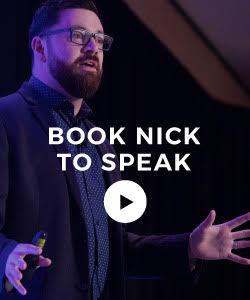Many organizations are talking about sharing their stories to connect with customers, donors, or potential connections. Why? Authentic stories are memorable and can build connections. Stories that are new, engaging, and interesting activate different parts in our brain than mountains of facts do. We can visualize and feel the stories. We typically don’t feel facts — especially if they are read to us from a PowerPoint slide.
Stories are authentic and true events that have occurred and that highlight what an organization or business is doing in the community. When meaningful stories are shared regularly, consumers become more engaged with the content-producing organizations. Connections are built.
There are several steps — at least five — that organizations can take to start sharing their stories.
Step 1: Make the Decision to Share Stories
Just about anything starts with the decision to do something. Sharing stories is no different. The organization as a whole has to make up its collective mind that they indeed want to share authentic, meaningful and interesting organizational stories. And this involves everyone. The top executive needs to buy in and publicly endorse that this is a good thing to do. Department heads and team members have to buy in and support the strategy, too.
Yes, C-level executives surely will run across stories that are worth sharing. But so will front-line staff. Front-desk employees, people answering the phone, social media managers, everyone really can run across interesting stories that might be worth sharing. If they are not sure that this is the current strategy, the sharing will most likely not happen.
Step 2: Determine What’s Worth Sharing
Stories are all around us. There are so many that once a good content strategy is off the ground it’s hard to not see stories everywhere. Some tips to consider as you are pondering what’s worth sharing and what’s not:
- Do I really want to share this with people? When you catch yourself saying things like “You won’t believe what happened…” that’s a good sign that you just experienced a good story that might be worth sharing.
- What does this story have to do with your organization? If it fits into what your organization is about, it might be worth sharing. If it’s not really related, then it’s probably not.
- Sometimes you can only share parts of a story. Let’s say something good happened at the office when a customer stopped by. You ask the customer if it’s OK to share the story. The customer says “sure.” You ask if it’s OK to name them. She says “No.” You can most likely still share the story without identifying the customer. Yes, we like to see real people, but a good story might still be good even without their name!
Step 3: A Space to Share Stories
As useful as Post-It notes or email can be, those tools aren’t necessarily the best place to let team members share meaningful stories. Depending on how comfortable your organization is with being public there are several ways:
- Allow staff to directly post stories from their areas to your website’s blog. Advantage: Stories get published quickly. Disadvantage: Stories can get published too quickly. An added option would be to have at least one person proofread the story.
- Start an internal blog. Password protected WordPress sites are easy to launch. Allow staff to share short summaries of stories that the communications team later could flesh out.
- Bring stories to monthly meetings and publish the ones the team decides are the best fit for an organization’s mission and channels.
- Here’s a story now! Some stories have to be covered now and published now. For example, in the summer of 2013, two girls walked into the United Way of East Central Iowa offices and donated the money they had raised through a lemonade stand. I interviewed them on the spot, took their photo, and their mom later sent another photo. We then shared the story on the website and social media. That this just happened gave it a little bit of a newsy twist. We later invited them to participate in a kick-off event, too, to help us announce our goal. “We raised $68 through our lemonade stand. What will be your lemonade stand to support United Way?”
Step 4: Workflow
Everything new will impact workflow and workload. Stories are great but who will do them? The United Way of East Central Iowa Communications Team weighs projects weekly, but sometimes a current task needs to be dropped to share a story now or to help news reporters now because they want to do a story on something they’ve seen on the website.
Offer different ways of telling them: a podcast, a short blog post, maybe a quick video interview. All these methods take varying amounts of time. Some versions can be pulled off quickly. Some can take longer.
When good stories take off it’s easy to sell their value. The key is to share good stories and then measure what worked and what didn’t.
Step 5: Measure and (Dis)continue
Google Analytics and various social media tools make it easy to measure if a story resonated with an audience. You may be able to measure other conversions, too, like how many people signed up for your newsletter or bought something – if you sell something.
For example, at United Way we know that volunteer-related posts and reports resonate with the audience. We try to tie volunteering in whenever it’s relevant and adds value to our digital storytelling. And the numbers show that people consume those stories.
Do more of what worked and less of what didn’t. In the long run, shared stories benefit all of us. The community can learn something from them and organizations can share their highlights as well as gain new connections (aka customers).
Sharing stories sounds easy. We all have stories that we share at the dinner table, on Facebook or in passing in the hallway. Sharing stories on an organizational level, outside the traditional marketing processes is a whole new beast. That doesn’t mean it’s impossible. It’s very possible, but it’s important to think about some organizational-wide processes as well as personal feelings and preferences toward this new kind of storytelling.
Sharing authentic stories organization-wide can be done when we set our minds to it. When it’s done correctly and effectively it will build more connections, build trust and ultimately can help with sales.
Are you going to try sharing your organization’s stories?









